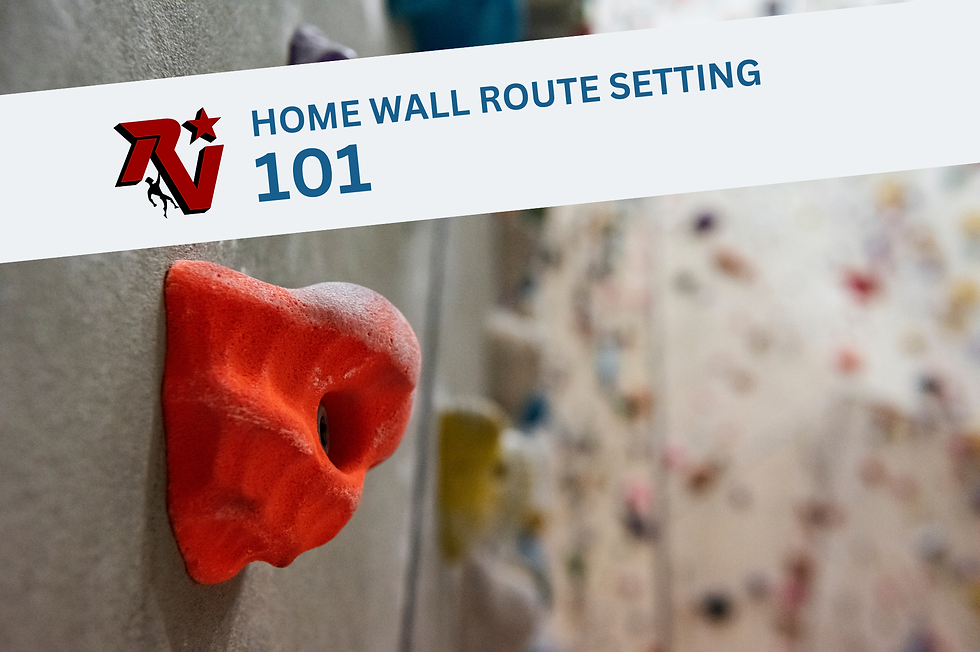How to Train for Rock Climbing in 60 Minutes or Less
- Dovi Hirsch
- Jun 8, 2022
- 4 min read
by Christopher Schafenacker

Yes, to climb like the pros you need to train like the pros. However, if you’re reading articles about how to train for rock climbing in 60 minutes or less, you’re probably not trying to become a pro…and that’s fine! You don’t need to tune your body into the kind of shape needed to send 5.15b, so you shouldn’t submit your body to the sort of training volume undertaken by those that do tick such celestial grades.
“Only Ondra should train like Ondra,” wrote Neil Gresham back in 2015. The reason, of course, is that only Ondra’s body can handle such copious volume. You, me, and 99.9% of other climbers would simply get injured if we tried to follow his program.
It may not look like it, but the pros get strong not by piling on training hours, but by ratcheting up their intensity to the maximum point possible, while still being able to recover between sessions. The difference is just that they go can go harder, and recover quicker than all the rest of us.
How to train for rock climbing, then? Work hard, rest hard.
If you don’t have 3 hours to hit the gym 3 times a week, that’s fine. Rock climbing doesn’t need to be your part-time job if you want to improve. An intense 60-minute session every other day, plus well-planned weekends at the crag, is enough to keep you fighting fit—but only if you make the most of your time.
The Best Workouts for Climbers with Jobs (or Kids, or Whatever…)
Naturally, there is no single best rock climbing workout, or series of workouts. The best training programs are periodized, and so the best rock climbing workout will depend on where you’re at in your progression. This said, all the best workouts for climbers share a few common features.
1. Warm Up
Most of us could trim a lot of fluff from our rock climbing workout, but time spent warming up is not negotiable. If you don’t grease your engine, you can’t run at full steam and, eventually, you’ll blow a gasket. Even if you’re just doing a quick hangboard session, you need to warm up your entire body. After all, while your fingers may be the crucial link, your entire musculature works together to support grip strength while climbing.
2. Focus on Your Fingers
Many climbers with limited time train from home and hope their supersets of pull-ups, planks, and burpees will be enough to send their project on the weekend. Yes, conditioning is important to building the sort of fitness base needed to withstand the strains of our sport, but it alone won’t take you to the chains. For this, you need finger strength, and getting there is as easy as spending thirty minutes on a traditional or portable hangboard a few times a week.
Warm up, and then depending on whether you’re in a strength or power phase, either perform five 10s. on, 3s. off repeaters, or 5s. on, 90s. off max. hangs 3-5 times. Rest 2 to 3 minutes between sets, and 5 minutes between grip types. Train 2 to 3 grips and take care to tailor your choices to your project.
If you don’t have a place at home to mount a traditional or portable hangboard, you can always invest in a simple training block.
3. Plan Ahead
Efficient training means having a plan. If you only have one window during the week to session on your home wall or get to the gym, you need to make the most of it. Map out a series of limit-level boulders you plan to work if power is your goal. Design two or three boulder circuits you can run laps on if you’re training strength. Write out your plan, execute, make notes, and go home. If you’re at the gym to socialize, by all means, trash yourself on easy boulders with friends afterward, but if you’re serious about improvement (and avoiding injury), trust that rest is a better investment.
Featured Climbing Training Gear
Maverick: The on-the-go, bring it anywhere hangboard. On a family road trip to keep your fingers in shape. We like to bring this to the crag with us to keep our fingers warm—without losing skin on mediocre warm-ups—at that steep, thuggy sport crag.
The Rock-Stah: Our handcrafted version of a traditional hangboard, with curving crimp rails to help alleviate unnecessary strain on your pulleys. Because ain’t no one got time for a finger injury…
The Rocket Wall: Available in 6’ and 8’ widths, it’s been tough for us to keep up with the demand for this innovative home climbing wall solution. Slightly overhanging, the Rocket Wall is big enough to set routes on, or to build a systems board.
The Rocketeer Wall: our free-standing adjustable solution for those who can’t mount a hangboard anywhere in their home or apartment—or who are limited on space. The Rocketeer gives climbers the additional option to set specific climbing holds. Recreate the crux holds of your proj and get ready to send, bruh.











Comments